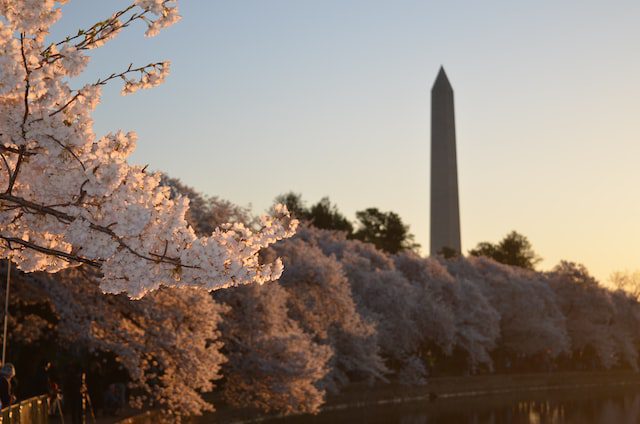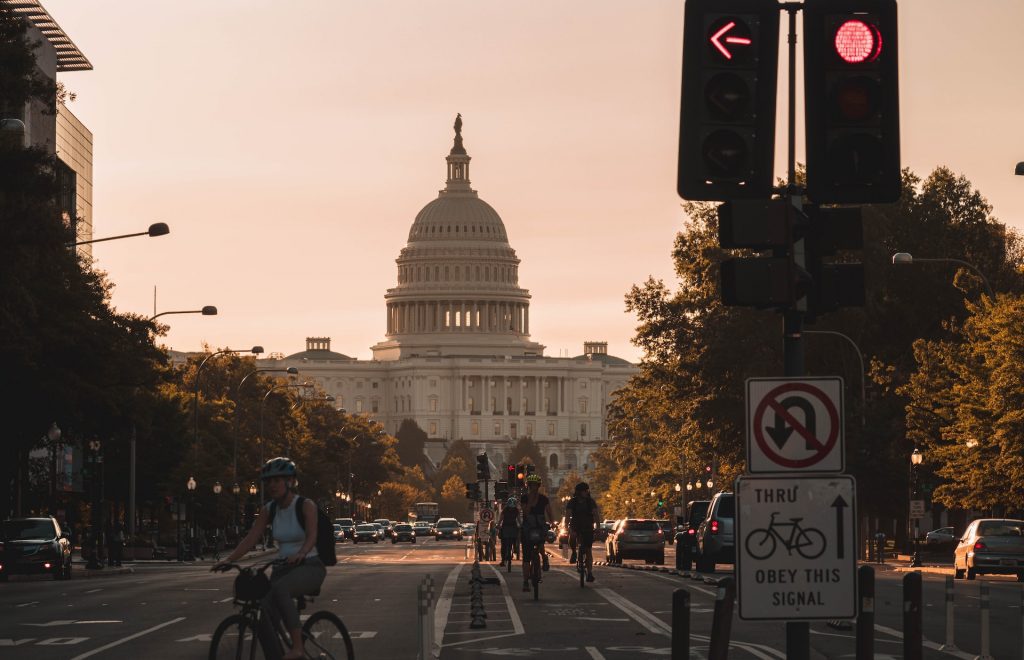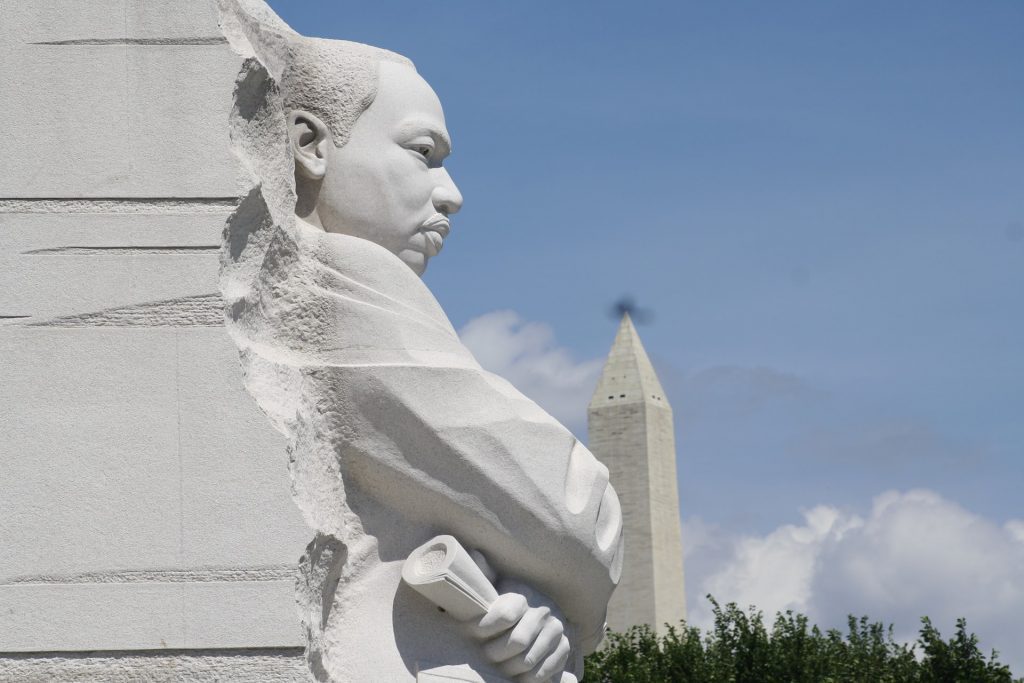Estimated reading time: 11 minutes
Anyone can live in DC as there’s something for everyone. If you’re considering moving to Washington DC, here are honest pros and cons of living in this city.

Pros:
- Efficient Public Transportation
- DC is a Walkable and Bike-Friendly City
- You can live in Washington DC without a car
- Rich History and Culture
- Numerous Attractions and Activities
- Beautiful Parks And Nature
- Great for Students and Young Professionals
- Variety of Places to Live
- Diversity
Cons:
- Cost of Living
- Harsh Winters, Muggy Summers
- Bad Traffic and Driving Conditions

Pros of Living in Washington DC
Let’s dive into the myriad benefits that the nation’s capital has to offer.
Public Transportation
Washington’s public transportation is a fantastic, reliable way to get around the Metro area. In fact, it has been ranked as the best transit system in the nation due to its efficiency and short average commute times.
Riding the Metro
The WMATA (Washington Metro Area Transit Authority) operates the trains and buses, providing transportation in Washington.
Metro, the train system, operates from 5 am until midnight Monday to Thursday, 5 am to 1 am on Fridays, 7 am to 1 am on Saturday, and up to midnight on Sundays. It has 6 lines and 91 stations that serve the metro area and neighboring suburbs.
You need a SmartTrip card to pay the fare on Metrorail. You can buy the card online at wmata.com or a vending machine in all Metro stations; the cards cost $10 and come preloaded with $8 worth of fare.
Your fare on a Metro ride depends on the distance you are traveling and the time of day. Rush hours attract peak rates; use the Trip Planner to know the exact cost of your ride and the real-time arrival/departure and plan out your route.
Taking the Commuter Train
Besides the Metro, two commuter lines get travelers from Virginia and Maryland to Washington.
- Virginia Railway Express: VRE runs from Monday to Friday and provides transportation from Broad Run Airport in Bristow and Fredericksburg to Union Station, Washington.
- MARC Train Service: Maryland Area Train Commuter (MARC) train has three routes, starting at Camden, Penn, and Brunswick, that provide transportation to Union Station.
Taking the Bus
You can also take the Metrobus if you’re going somewhere the train doesn’t reach, such as Georgetown. With 325 bus routes, it connects all Metrorail stations and other local bus systems. Rides are $1.75 running 24/7, and you get a $0.50 discount when you pay with a SmartTrip card.
The DC Circulator is another bus system that provides transportation along six lines between popular spots such as Union Station, Dupont Circle, and Capitol Hill. There’s even a dedicated route to National Mall for easy access to the various monuments. Rides cost $1, and buses run every 10 minutes.
Multiple Airports in the Area for Travel
Air travel is easy in DC thanks to the multiple airports available. There are three major airports;
- Ronald Reagan Washington National Airport (DCA) is across the Potomac River. It offers flights to over 90 destinations on 8 airlines, including American Airlines and United Airlines. To access it, use its dedicated Metro stop on the Yellow and Blue lines.
- Washington Dulles International Airport (IAD) is located in suburban Virginia, 26 miles from DC. It offers more than 100 direct domestic and international flights on almost 40 airlines. You can access the airport through the Silver Line Express Bus that connects you to Wiehle-Reston East Metrorail Station.
- Baltimore/Washington International Thurgood Marshall Airport (BWI) is 32 miles from DC and offers flights to more than 90 domestic and international destinations. It is accessible via the AMTRAK/MARC train route at Union Station.
DC is a Walkable and Bike-Friendly City
Washington is one of the most walkable cities in the nation, ranked 7th, according to Walk Score. Some neighborhoods, such as U-Street and Dupont Circle, are more walkable than others, with Potomac Yard/Potomac Greens neighborhood being the least walkable.

Besides being highly walkable, the city is also bike-friendly. Washington boasts of being home to one of the first bicycle routes in the US and more than 150 miles of bike trails and lanes.
You can rent a bike at Capital Bikeshare at $8 for a day pass. There are more than 6000 bikes and 600 stations. Additionally, all buses in DC are equipped with bike racks, making it easier to take your bike along. And now, with new dockless bikeshare and scooter services like Spin and Lime, there’s always a bike nearby.
Can you live in Washington DC without a car?
With its efficient public transportation system that includes train and bus routes, cabs, rental bikes, and high walkability, you can easily live in Washington DC without a car. There’s virtually a train or bus route to anywhere you want to go with affordable fares.
Rich History and Culture

Washington DC has a rich mix of heritage and culture that enchants residents and visitors alike. From beautiful nature to ethnically diverse culture and lots of historic sites, it’s a top destination for many people.
DC is home to a wide range of arts like literature and music. Renowned writers like Henry Adams and Margaret Leech have roots in DC. Famous books like The Exorcist (1971), whose setting was in Georgetown. DC is also home to famous pianists, saxophonists, jazz players, and renowned musicians like Ruth Brown.
The cultural scene here has abundant galleries, museums, sports and recreation centers, and theaters. With 70+ museums to explore, galleries, zoos, and other attractions, Washington DC offer a unique experience and a rich cultural history.
Washington DC Has Numerous Attractions and Activities
Living in Washington DC is fun as there are endless things to do and attractions to behold. The monuments and historic buildings, national symbols, galleries, museums, and other attractions will keep you busy as you explore this city.
- Take a guided tour of the US Capitol, which houses the US Legislature, and learn the history and operations of this house
- Take a photo at the iconic Lincoln Memorial. It’s even more spectacular at night when all the columns are lit.
- Visit the Smithsonian National Air and Space Museum and see historic aircraft, rockets, and space suits.
- Go on a dinner date overlooking the Potomac River at Georgetown and the Waterfront
- Visit the National Mall and Veterans Memorials with pools, spacious lawns, and veterans’ names inscribed on the memorials’ walls.
- See the White House, the official US President’s residence. Tour the White House Visitor Centre nearby and see exhibits like a model of the house, all historical changes, and furniture used by former presidents.
- Tour the Library of Congress
- Visit the J.F Kennedy Center for the Performing Arts
These are just a few sights to see; there are many more places to visit and explore.
DC Has Beautiful Parks
Besides museums and monuments, DC is also known for beautiful parks, providing a peaceful escape from the hustle and bustle of the city. There are fantastic public and botanical gardens with beautiful landscaping and scenic spaces you should definitely visit.
- The US Botanic Garden, “the living museum of plants.”
- Go hiking, bird watching, canoeing, or play a round of golf at the Kenilworth Park and Aquatic Garden
- Hike, cycle, or ride a horse at the 1700-acre Rock Creek Park
- See the spectacular waterfalls and ponds at the Dumbarton Oaks Park
- Enjoy some of the best Washington DC views at the Georgetown Waterfront Park
- Also, visit Anacostia Park, The Yards Park, Theodore Roosevelt Island Park, and the Meridian Park
Great for Students and Young Professionals
Washington DC is a top destination for students and young professionals looking to grow their careers thanks to the numerous job opportunities for career growth. There are opportunities in every sector—public, private, non-profit, government, business, arts, science, etc.
If you’re looking for an entry-level or a government job, there’s no better place to start than DC. And because of its high tourist population, it’s an excellent job destination for people considering a career in the tourism and entertainment industries.
DC also gives residents numerous networking opportunities. Every encounter is a chance to grow your professional network, especially if you work for continuously-changing government contractors.

Living in Washington DC in your 20’s is exciting and fun-filled. For starters, DC is home to some of the best colleges and Ivy League universities like Georgetown University, American University, and Howard University, among others.
Besides the excellent education scene, there are other fun things to do in DC for people in their 20s. Dupont Circle has plenty of bars for a fun bar-hopping night; for great rooftop bars, check out Old Glory. DC also has an excellent music scene, from huge concerts at the Verizon Center to indie groups and smaller popular shows at the 9:30 Club and the Black Cat.
Whether you’re here for school or work, there’s an endless array of exciting things to do in DC.
There’s a Variety of Places to Live in Washington DC
One more thing to love about living in Washington DC is the variety of neighborhoods. Washington is more than the national monuments, the White House, and what you see in political movies set here.
There are 131 distinct and diverse neighborhoods. Places where people visit and live, with some of the best restaurants, a vibrant pub buzz, creative spaces for supporting artists, innovative local businesses, and where friends meet and laugh.
Every DC neighborhood has its distinct culture, history, and things to love. From the amazing beauty of Southwest Waterfront, the vibrant nightlife in Shaw and U Street Corridor, and the famous half-smoke served at Ben’s Chilli Bowl; you’ll love living here.
Some of the best neighborhoods include Columbia Heights, Dupont Circle, Adams Morgan, Georgetown, Capitol Hill, H Street, Logan Circle, Petworth, Shaw, and The Wharf.
DC is Diverse
According to WalletHub, DC is the 17th most diverse state in the US. It has a high economic and ethnic diversity.
There are all types of industries here; professional, retail, administrative, management, scientific, and more. Ethnically, Whites make up the largest community. There are also large communities of African Americans, Asians, Scandinavians, and Hispanics.
Universities here embrace diversity as an integral part of excellence. Living in DC will expose you to different cultures and diverse environments where you can grow, increase your cultural awareness, and develop unique perspectives.
Cons of Living in Washington DC
High Cost of Living
Living in Washington is expensive as the city has one of the highest costs of living in the US, which is 13% higher than the national average.
Most people rent when living in DC due to the high cost of housing. It will cost you an average of $2,296 to rent a 1-bedroom apartment and $3,100 for a 2-bedroom.
However, even with the admittedly high housing costs, the median household income of $90,842 makes living here reasonable.
Harsh Winters, Muggy Summers, and Bugs
Weather conditions in Washington during summers and winters can be uninviting.
DC’s summer weather is notoriously hot and humid, with temperatures exceeding 90℉. Thunderstorms are also common during summer due to the combined humidity and heat.
Brace for the bugs. Washington is one of the worst cities for bugs—mosquitos, fleas, ticks, and cockroaches. The bugs are in sheer quantities in summer, which is a major downside because you can’t enjoy the outdoors without getting bug bites.
If you’re moving to Washington DC, be sure to add humidity, summer heat, and allergies to your list of considerations.
Bad Traffic and Driving Conditions
The traffic in Washington DC is a nightmare. In fact, the city ranks top 5 in the cities with the worst traffic in the country. It gets worse during tourist season, and on-street parking is horrific.
If you’re considering moving to Washington DC, living in a neighborhood close to your workplace or within the city limits will save you hours in commuter times. Alternatively, you can opt to use public transportation as it’s often efficient and reliable because traffic will take up too much time.
Also, give yourself more time estimates when driving from one place to another because of the constant traffic, even during weekends. This is one of the major drawbacks of living in Washington DC, but you can find ways around it.
Live in Washington DC. Rent With June
Living in Washington DC not only exposes you to tons of opportunities but also lets you explore the nation’s capital. From the historic buildings to cultural arts, a beautiful greenery scene, and diverse neighborhoods, the experience is holistic. Well, besides the bugs and harsh weather.
It is especially a favorite for millennials and young professionals because it offers plenty of chances to grow their careers and live in one of the best cities in the US. If you’re thinking of moving here, you can find rental apartments in Washington DC.
June Homes offers rental apartments and furnished/unfurnished rooms for rent in Washington. Whether you’re visiting or looking to settle here, we have long-term and short-term rental apartments in different neighborhoods that will fit your needs.
Contact us today and let us help you find an apartment to rent in Washington DC.